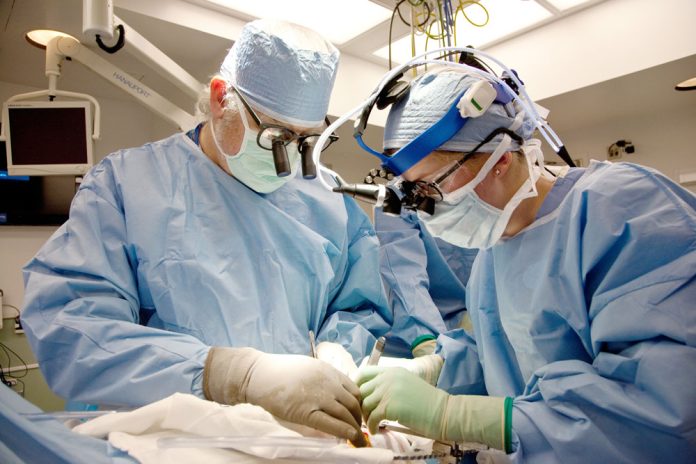Transplantation can restore health to an individual suffering from failure of an organ; however, a major problem is rejection in which the body’s immune system destroys the transplanted organ Currently, much research is focused on preventing transplant rejection; in addition, the topic of personalized medicine, which involves adapting drug doses and combinations to individual’s specific diseases and body chemistry, is felt to be the future of healthcare by many researchers. Now, a team of UCLA bioengineers and surgeons has taken a major step toward that reality. The researchers, from the UCLA schools of dentistry, engineering and medicine, have developed a revolutionary technology platform called phenotypic personalized medicine, (PPM), which can accurately identify a person’s optimal drug and dose combinations throughout an entire course of treatment.
PPM differs from other approaches to personalized medicine currently being tested because it does not require complex, time-consuming analysis of a patient’s genetic information or of the disease’s cellular makeup. Instead, it produces a personalized drug regimen based on information about a person’s phenotype (biological characteristics that could include anything from blood pressure to the size of a tumor or the health of a specific organ).
Dean Ho, MS, PhD, who holds appointments in oral biology and medicine at the UCLA School of Dentistry, and in bioengineering at the UCLA Henry Samueli School of Engineering and Applied Science, explained that one of the platform’s remarkable capabilities is its ability to produce graphs personalized for each individual patient that represent precisely how they respond to treatment. The graphs plot the drug dose along the horizontal axis and the patient’s response to treatment on the vertical axis. (Data for the patient’s response is determined by whatever health goal the doctor is trying to achieve; e.g., shrinking the size of a tumor, having a certain level of medication in the blood, or reducing toxicity level)
Interestingly, Dr. Ho said, every individual produces a graph in the shape of a curve called a parabola — picture a “U” either right-side up or upside down, and that parabola dictates how doctors should proceed with the treatment. Each individual’s unique curve provides doctors with a visual guide to determine the exact doses of medicine they should prescribe as the treatment continues, which Dr. Ho notes is the key to achieving truly personalized medicine. He explained, “This study demonstrated the ability to use a patient’s phenotype to personalize their treatment in an actionable manner without the need for genome profiling. We also have shown that PPM can be extended to optimize combination therapy for a wide spectrum of diseases.”
Dr. Ho noted that demonstrating that every patient’s response to medical treatment, for diseases ranging from cancer to infectious diseases, or following an organ transplant, produces a parabola-shaped graph is a landmark advance. Among other factors, the approach will allow doctors to prescribe the precise amount of medicine needed to shrink a tumor or ensure the body does not reject an organ, for example, as opposed to using a higher, “standard” dose that is recommended based on an average of how all patients have responded in the past. Another advantage of PPM is that it can be recalibrated in real time to adapt to changes during treatment; for example, if a person undergoes surgery or develops an infection, or if their organ function changes over time, this situation means that drug dosages or combinations need to be modified. The platform can use the patient’s new data to provide doctors with a new parabola and revised recommendations.
The new study evaluated eight subjects who had recently received liver transplants. Most transplant patients take an immunosuppressive drug called tacrolimus to prevent organ rejection. In general, doctors prescribe dosages of the drug based on how other patients have responded in the past, and they adjust those amounts if and when complications arise. In the UCLA research, four patients received care that followed the traditional approach and four received treatment that was guided by PPM.
“Properly managing patients’ immunosuppression can have profound long-term impacts on the survival of the organ and the patient,” said corresponding author Dr. Ali Zarrinpar, MD, PhD, an assistant professor of surgery in the UCLA division of liver and pancreas transplantation. He noted, “This study shows that we can pinpoint drug doses that can substantially improve patient outcomes. The ability to confidently and systematically guide the treatment of each patient is a critical advance in minimizing the chance that transplant recipients will reject their new organs, while also avoiding drug side effects.”
To know whether the PPM approach was successful, researchers needed to determine the amount of tacrolimus in each patient’s body stay within the “ideal” range, as dictated by each patient’s unique parabola-shaped graph. They found that those who were treated following PPM spent as much as 50% less time outside of that range than the patients whose treatment followed the traditional approach. “Optimizing the drug ratios during combination therapy for a population or a specific patient has, until now, been virtually impossible,” said corresponding author Chih-Ming Ho, PhD, who is UCLA Engineering’s Ben Rich–Lockheed Martin Professor. He added, “Our ability to calibrate how individual patients respond to treatment and to use that information to robustly guide their regimen based on the parabola-based approach has made personalized medicine a reality.” Dr. Chih-Ming Ho, who holds faculty appointments in mechanical and aerospace engineering, and in bioengineering, pioneered the development of PPM. The team is using PPM in several other clinical trials, some of which are already underway, including treatment of cancer and infectious diseases.








